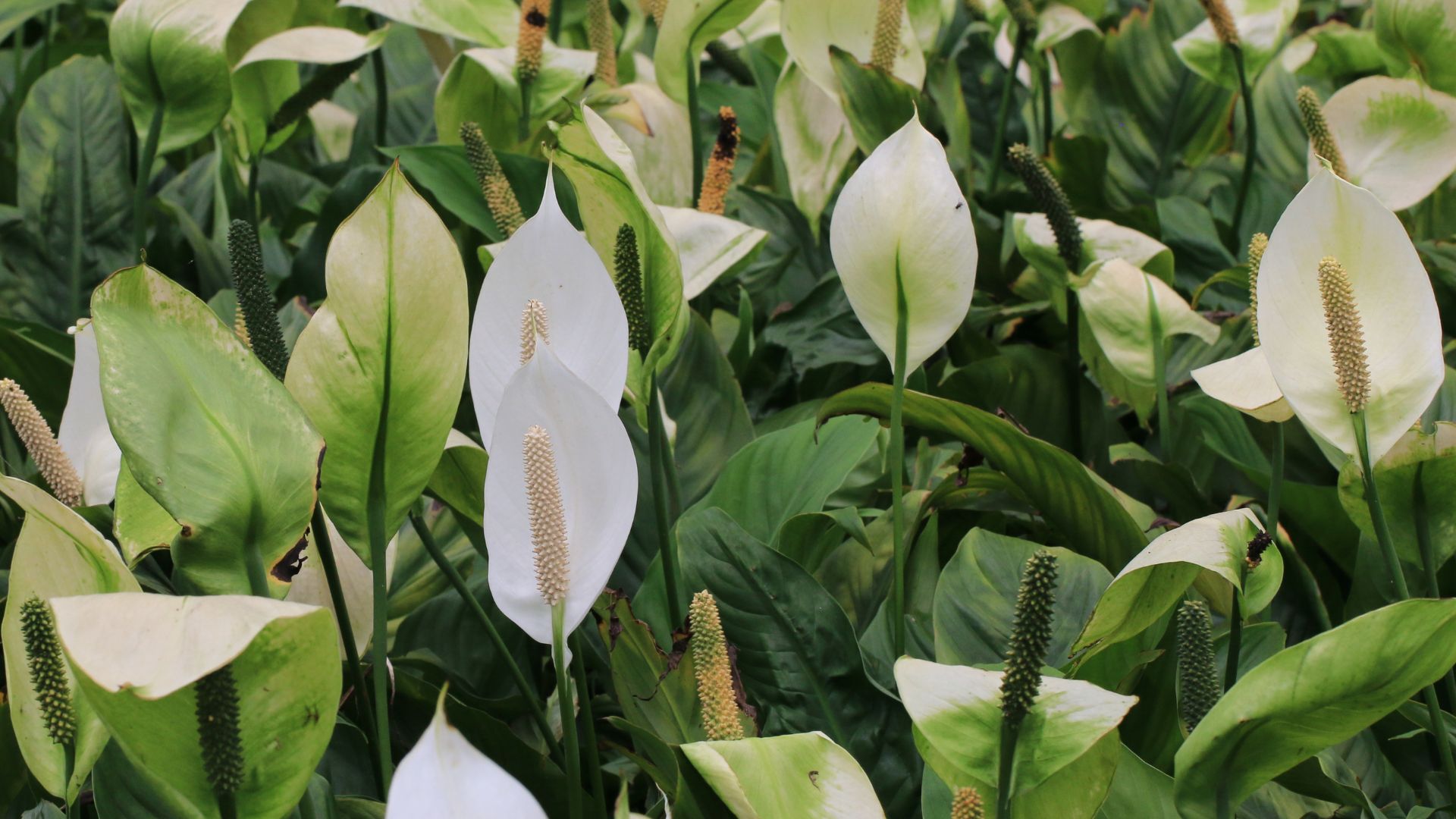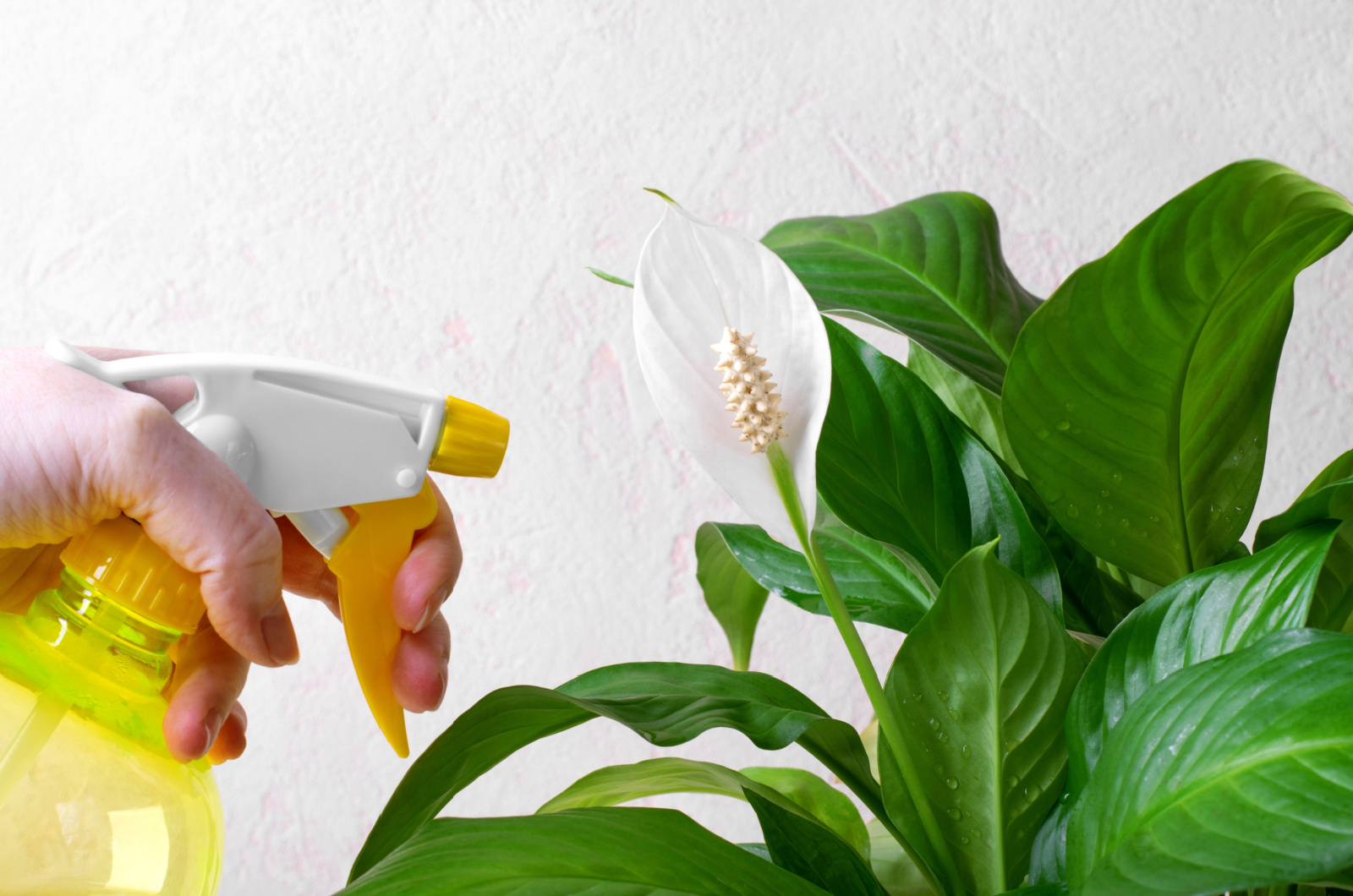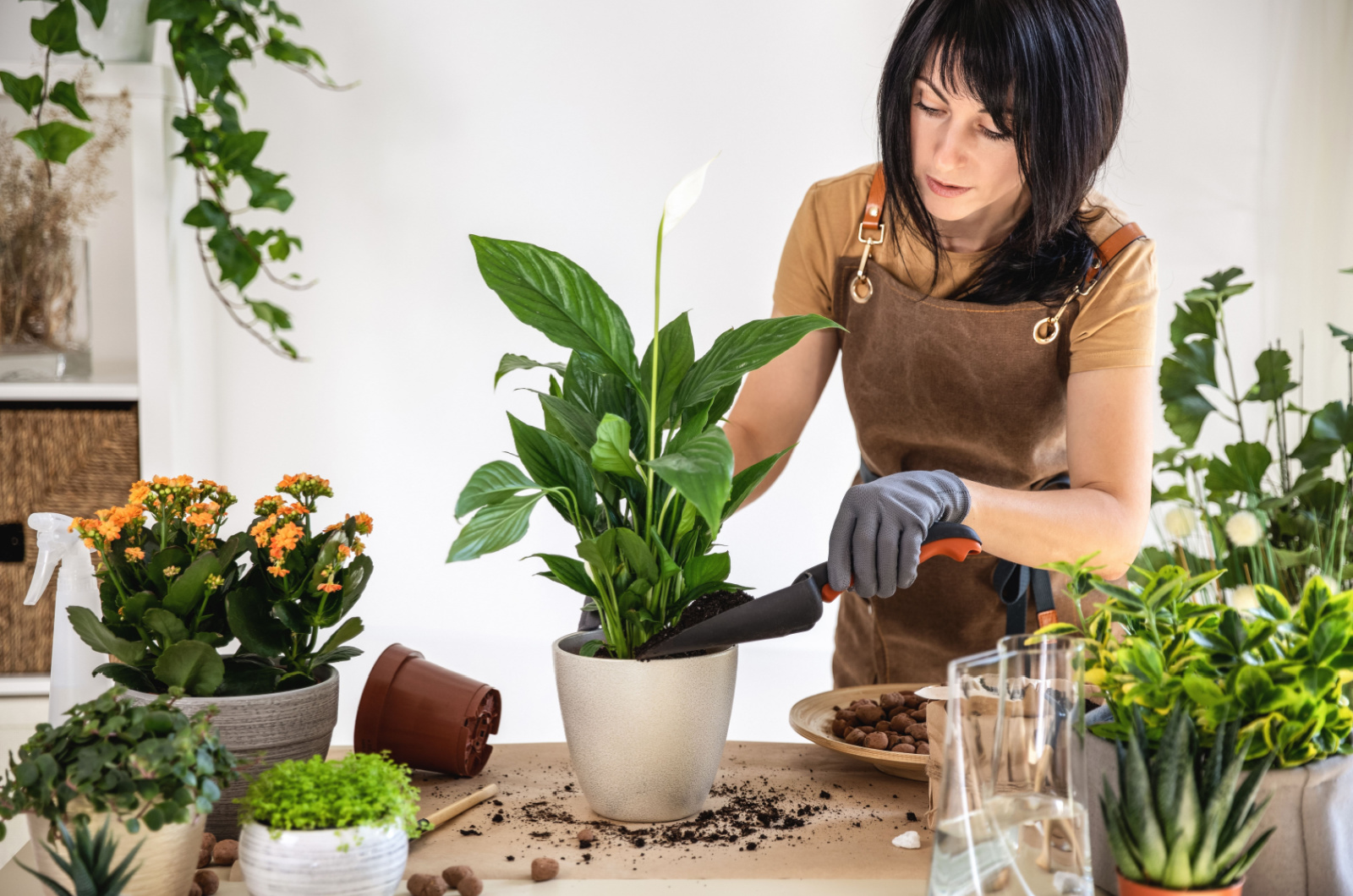Peace lilies are one of the prevailing houseplants. They can handle lower light conditions quite well, thrive in humid environments, and aren’t that fussy.
However, if you want them to produce their gorgeous flowers, you will have to pay attention to them. I say flowers, but the white part is actually a modified leaf protecting the real blossom – the rattlesnake-tail-resembling spadix.
And once you see how gorgeous these plants look after flowering, you’ll want as many blossoms as you can get!
Here’s how to encourage your peace lily to bloom more profusely!
Peace Lily Flower Stages
There are many types of peace lilies, but they all go through similar flowering stages. Understanding these is important because the first stage doesn’t look like much, but it actually sets the trail for the magnificent flower to appear.
The white part – spathe – emerges on a stem just like any other leaf, which is why it can go unnoticed for some time. It hides the spadix within, but as it grows it will slowly unfurl, revealing the shape we’re all familiar with.
Peace lily flowers can last for a month before they start to change their color to yellow or green, and eventually brown or black.
Just make sure to deadhead it once it withers to make room for new ones and keep your plant looking gorgeous.
How To Get More Blossoms
Stimulating your peace lily to flower isn’t that difficult. Here are some tricks that can help you out!
Give Your Peace Lily Enough Light
Getting the lighting right is one of the most important parts of every plant care routine. And when it comes to lilies, you should know that they love the dappled sunlight tree canopies provide.
Of course, we don’t have these rainforest conditions indoors, so indirect sunlight should do.
Move your plant a couple of feet away from bright windows so that the direct sun rays can’t touch and burn it. These locations get just enough light for your peace lily to flourish and flower.
I know everyone says that these plants can tolerate lower light levels, but know that they won’t flower as much in those locations. They need light for photosynthesis – a process that produces food and energy necessary for proper growth and flowering.
Too much light, on the other hand, can burn your plant or turn its flower green and neither of these is an attractive option.
Water It Adequately
These plants love moisture, but watering your peace lilies properly requires some knowledge.
And even though they love moisture, you can still overwater them, so make sure to irrigate these plants only after the top couple of inches of the potting medium are dry.
You can use your finger or a moisture meter to check or look for slight drooping to tell you when to water.
And I say slightly drooping, not waiting until the entire plant folds towards the bottom and its tips turn yellow or brown! That’s a serious sign of underwatering, and you need to irrigate your plant instantly and thoroughly if you see it.
Finally, always water your peace lily until you notice that excess moisture is draining through the hole in the bottom. Let it drain completely and return your plant to its usual spot.
Choose A Proper Potting Medium
Planting your peace lily in a proper soil mix is incredibly important if you want it to thrive and produce flowers.
Like other houseplants, they require a well-drained, aerated, and loose potting medium. They like their soil to be moist, but never soggy or water-clogged since that can lead to overwatering and root rot.
Most houseplant ready-made mixes are suitable for your peace lily, but you can make your own by mixing 2 parts of your favorite potting mix, 1 part bark or perlite, and 1 part coco coir.
And if you keep your plant in a sunny location, make sure to add some compost to retain more moisture.
Plant It In A Proper Pot
Choosing a suitable container for your peace lily is incredibly important. Make sure it has drainage holes and is large enough to fit the roots, but not bigger than that.
Enormous planters can lead to water-clogging and root rot, resulting in a stressed plant that doesn’t flower.
The good news is that you don’t have to repot this beauty that often. But once you see the roots coming out of the drainage holes, you should move them to a planter one size larger than the previous one.
If your peace lily is rootbound, it will have a difficult time uptaking moisture and nutrients, which can slow down its growth, stress it out, and discourage flowering.
The basic rule of thumb is to repot your peace lilies during their growing season (during spring and summer) every 1-2 years, depending on the growth rate and the plant size.
Consider The Temperature And Humidity
Peace lilies are native to tropical climates and need warmth to develop optimally and produce flowers.
Luckily, it isn’t that difficult to mimic these conditions indoors. Simply make sure the temperature is between 65-85°F and that humidity levels are above 50%.
You can achieve the desired air moisture by regularly misting or using a humidifier.
P.S. Don’t expose the plant to drafty locations since they can change the temperature suddenly and dry out the air, stressing out your plant in the process.
Don’t Forget To Feed It
Peace lilies need nutrients in order to flower. Fortunately, you don’t have to go extra. A well-balanced fertilizer such as triple 10 is more than enough to satisfy all its mineral requirements.
Feed your plants for about 1-2 months following the instructions on the package. And if you notice peace lily leaves turning black or flowers turning green, reduce the amount and frequency of fertilizer.
The flowers and leaves won’t get their color and vigor back, so you will have to wait until the next flush of blossoms or remove them.
Of course, you shouldn’t fertilize recently repotted or purchased plants. Store-bought potting mixes usually contain added plant food and enough nutrients to last your plant for 3-6 months, depending on the product.
On the other hand, weak flowers are a sign of nutrient deficiency, and your best bet is to test the medium with a home soil test kit to know which mineral you need to add more.
Let It Mature
Don’t be disheartened if you don’t see your peace lily blooming within the first year of its life. This plant actually takes about a year to mature and only then can it start flowering.
Many commercial growers feed their plants with hormones that speed up this process, but once you take it home and off those hormones, you’ll find that it stops blooming.
But don’t worry about it that much. Give your plant some time and it will reward you with its stunning white flowers in due time.
Wait For The Blooming Season
Like maturation, the blooming season is also out of your hands. You’ll have to wait for the spring and summer, which is when peace lilies usually blossom.
However, their blossoms can last up to a month, bringing their calming white color into the colder months of fall. And some can even flower in fall to mark the end of their season.
Therefore, don’t worry about the lack of flowers in winter and the colder months. Wait until spring and see what happens.
Keep It Safe From Stress
Stress is a terrible thing for a plant, and the symptoms include yellow, wilting, and droopiness. There are many reasons why your peace lily is drooping, and you should get to the bottom of it to keep your plant healthy and thriving.
Remember, stressed out peace lilies won’t flower, so you have to make sure you feed and water them just enough and give them plenty of indirect sunlight.
Other Maintenance Tricks
Some other things that can help you take good care of your peace lily, keep it safe from stress, and have it thriving include cleaning, pruning, and pest control.
Remember to wipe its foliage with a damp cloth every once in a while to keep the dust layer off your plant and ensure it can photosynthesize properly.
Prune the diseased, old, and discolored leaves so that your peace lily doesn’t waste energy on them and can focus on the production of healthy foliage and flowers.
And lastly, pests can destroy your entire plant and spread diseases onto others, which is why you should remove them as soon as you notice them. You can get rid of them with neem oil and other organic pest control products.
Also, stressed plants are more susceptible to pests, so find out whether something caused the infestation or if the pests really appeared out of nowhere.
Even if you do everything by the book, your peace lily can still stop flowering. However, incorporating these tips will make that less likely.
And their leaves are pretty amazing, too, so you can enjoy them until the next season!






